If, when pressed, the clutch pedal reaches the stop without resistance
The clutch does not disengage
Clutch disengagement is possible only by pressing the pedal quickly
Consequently, there has been wear or damage to the master cylinder piston cup
Usually repairing the master cylinder with the replacement of cuffs does not bring the desired result, so it is better to replace the master cylinder.
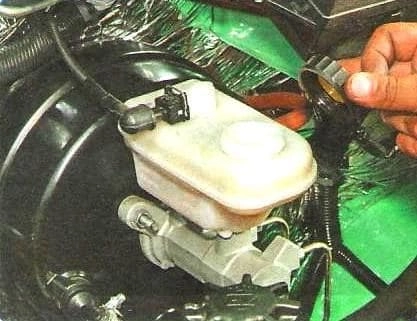
Open the lid of the master cylinder reservoir and pump out the brake fluid with a syringe or bulb
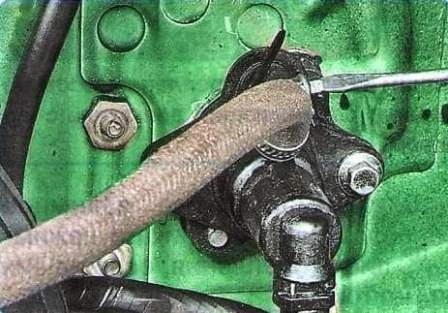
Loosen the clamp, slide the clamp along the hose and disconnect the hose from the master cylinder
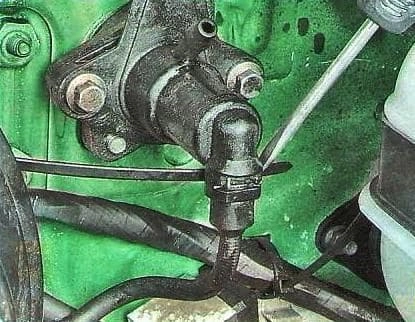
We extend the spring retainer for fastening the hydraulic clutch release tube to the master cylinder
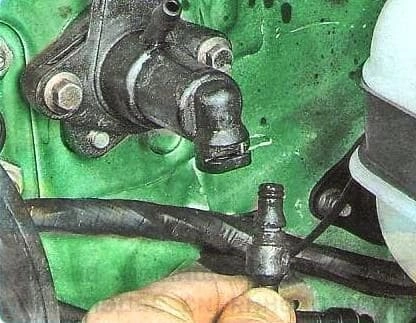
Disconnecting the handset

Disconnect the master cylinder pusher from the clutch pedal
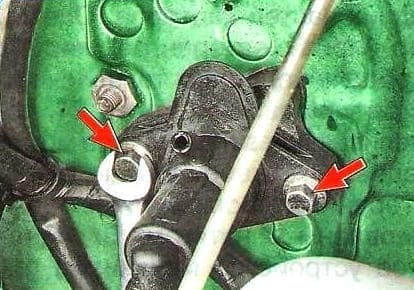
We unscrew the two bolts securing the master cylinder to the bulkhead
Remove the master cylinder.
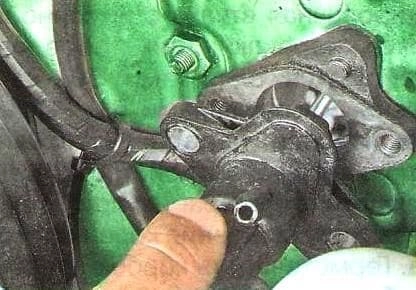
Install the clutch master cylinder in reverse order.
Pumping the hydraulic clutch.
If necessary, adjust the position of the clutch pedal.
Removing and installing the clutch release cylinder
Drain the fluid from the hydraulic clutch release

We extend the spring retainer of the tip of the hydraulic clutch release pipeline and disconnect the pipeline from the working cylinder.
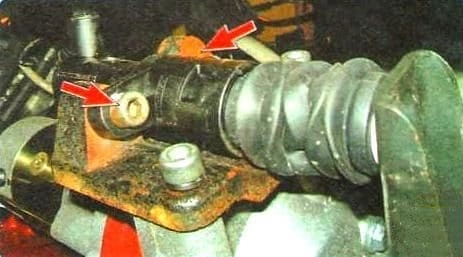
We unscrew the two bolts securing the slave cylinder to the bracket on the clutch housing and remove the slave cylinder.
Install the slave cylinder in reverse order.
Pour the brake fluid into the reservoir and pump the clutch hydraulic.
Removing, installing and adjusting the position of the clutch pedal
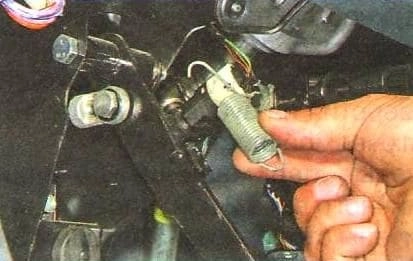
Disconnect the bent ends of the return spring from the pedal and bracket and remove the spring

While holding the bolt of the pusher of the master cylinder of the clutch release drive from turning, unscrew its nut with the second wrench
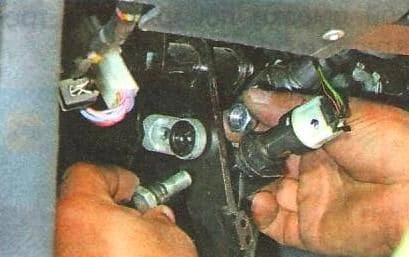
We remove the bolt-axle from the eye of the pusher tip and the clutch pedal hole
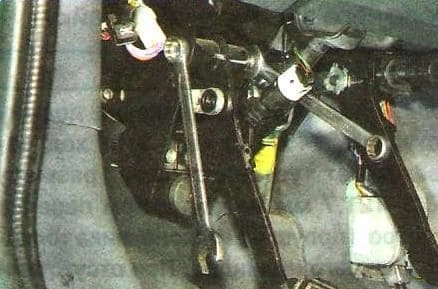
While holding the bolt axle of the clutch pedal from turning, unscrew its nut with the second wrench and remove the bolt axle from the eye of the pedal and the bracket

Remove the pedal
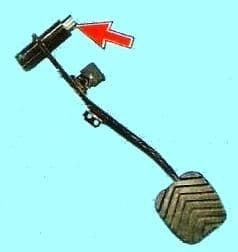
Remove the metal sleeve from the pedal eye and inspect it
A plastic sleeve is installed in the eye of the pusher tip.
If the bushing is worn out, replace it.
Install the clutch pedal in reverse order.
We lubricate the friction surfaces of the bushings and axle bolts with a thin layer of graphite grease.
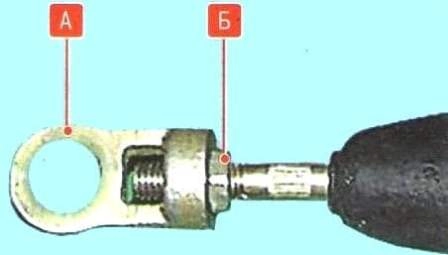
We adjust the pedal travel by changing the length of the master cylinder pusher.
We loosen the locknut "B" of the tip "A" of the pusher and, rotating the pusher with your hand or pliers in the right direction, we achieve the desired result, after which we tighten the locknut.
The full travel of the clutch pedal should be 145-160 mm.
This stroke corresponds to an installation dimension of 120.3-121.7 mm between the bulkhead and the center of the master cylinder tappet lug.
In the absence of air in the hydraulic system, the installation dimension must provide a full travel of the outer end of the clutch release fork, equal to 21.5-23.5 mm.
Pedal free play is not adjustable.





